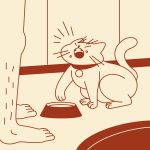10 Simple Exercises to Boost Your Mental Health: Effective Techniques for Daily Wellness
Rhythmic Breathing
Rhythmic breathing focuses on creating a regular pattern with your breaths. Start by inhaling through the nose for a count of four. Hold the breath for another four counts. Then, exhale slowly through the mouth for six counts. This extended exhalation phase helps to release tension effectively.
Consistency in the breath pattern helps synchronize the respiratory and cardiovascular systems. By maintaining this rhythm, individuals can enhance their focus and achieve a meditative state. Regular practice of rhythmic breathing can also improve sleep quality and reduce symptoms of depression and anxiety.
Mindfulness and Meditation
Mindfulness and meditation techniques can be powerful tools to boost mental health. They promote relaxation, reduce anxiety, and help develop a deeper awareness of the present moment.
Body Scan Meditation
Body Scan Meditation involves paying meticulous attention to different parts of the body, usually in a specific sequence. Starting from the toes and moving up to the head, individuals focus on each body part, noticing any tension or sensations.
This method encourages relaxation and helps in identifying physical discomforts. Practitioners often find that it reduces stress and anxiety, allowing them to reconnect with their bodies. It can be practiced lying down or seated, and only requires a few minutes.
Focusing on the body without judgment helps quiet the mind and can lead to a state of deep relaxation. This practice can be particularly useful before sleep or during stressful times. Consistent practice enhances body awareness and emotional regulation over time.
Mindful Observation
Mindful Observation is the practice of observing something in the environment with intentional focus. It often involves selecting a natural object, such as a leaf or flower, and studying it closely.
During this practice, individuals concentrate on the details, colors, shapes, and textures of the object. The goal is to become fully absorbed in the observation, fostering a deep sense of presence. This can help break cycles of negative thinking and enhance appreciation for simple things.
It is usually brief, making it easy to incorporate into daily routines. By developing this skill, individuals may find it easier to stay present in other areas of their lives. This practice promotes mental clarity and can serve as a quick mental reset.



